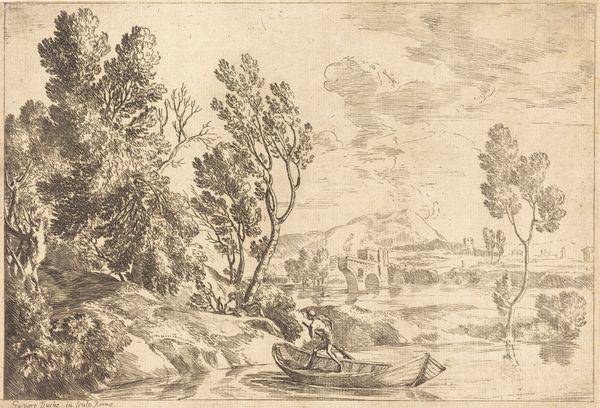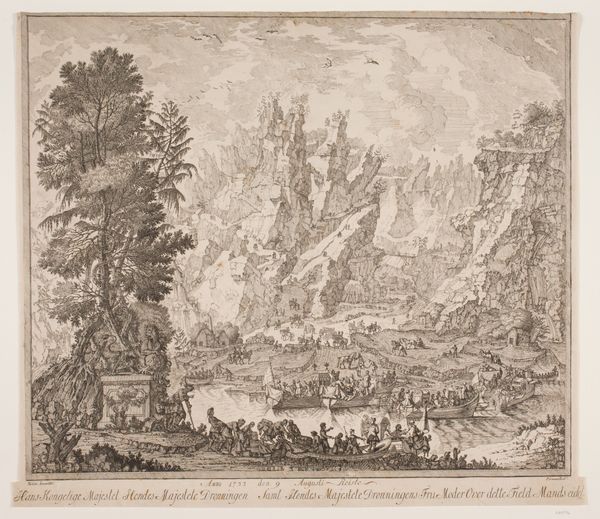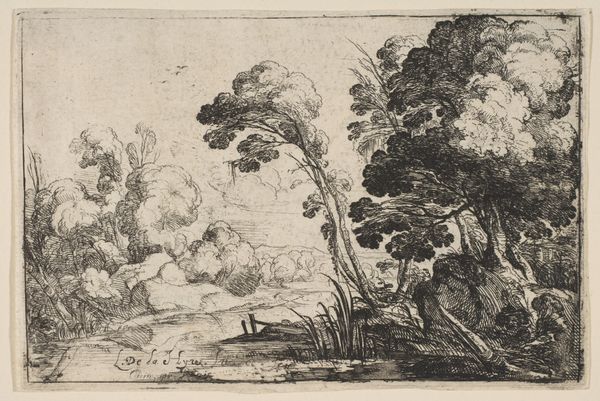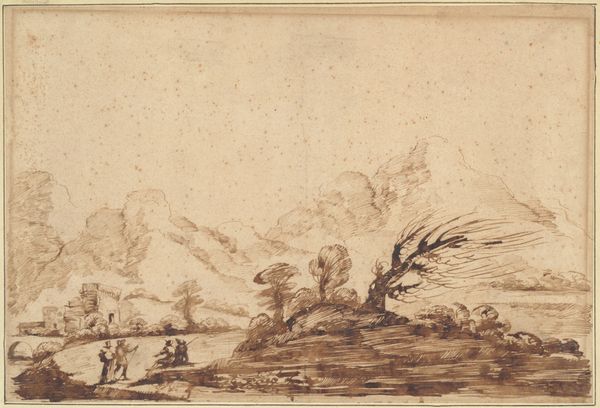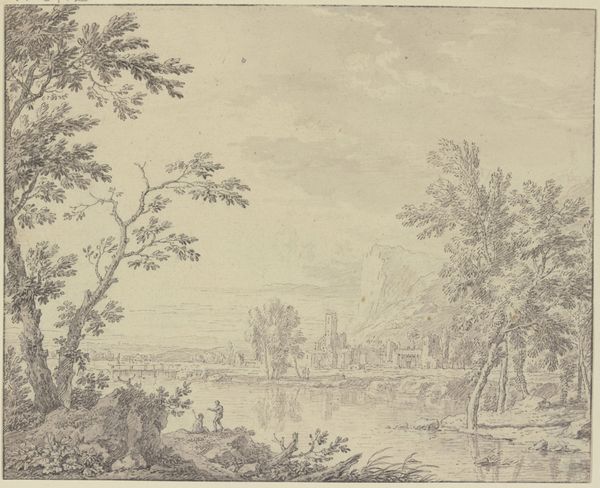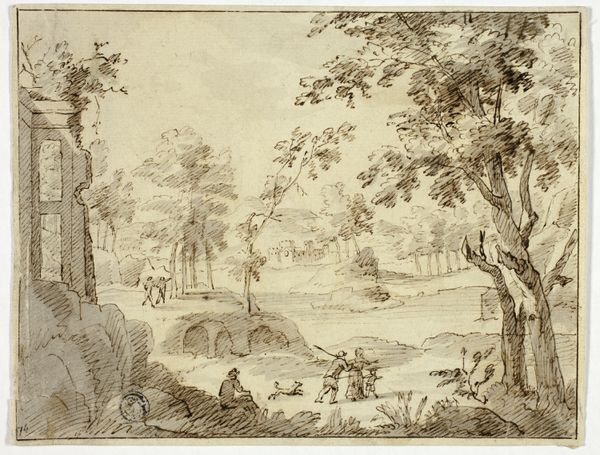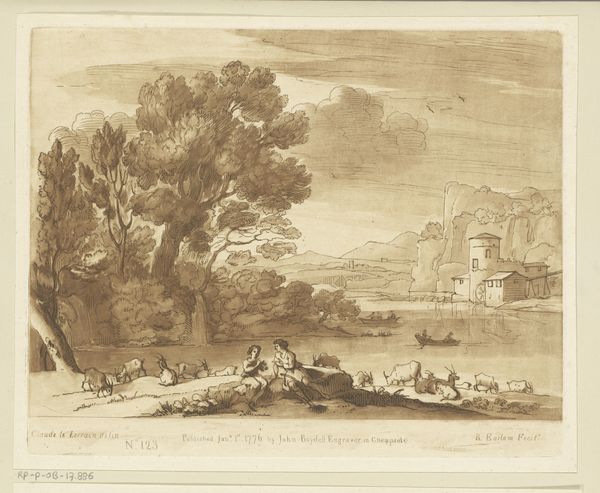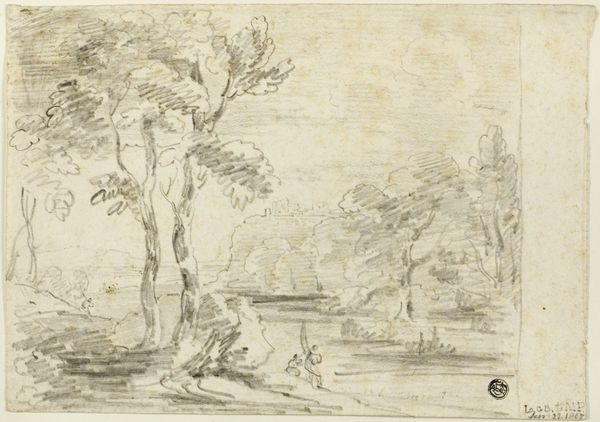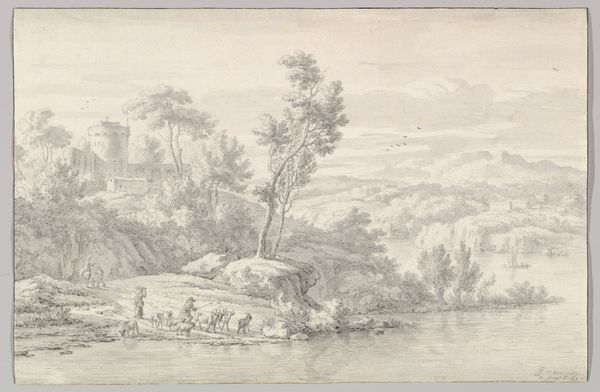
drawing, print, etching
#
drawing
#
dutch-golden-age
# print
#
etching
#
landscape
#
etching
#
perspective
#
11_renaissance
#
line
#
pen work
#
cityscape
Dimensions: sheet: 6 3/4 x 9 1/16 in. (17.1 x 23 cm) frame: 16 1/8 x 21 1/4 in. (41 x 54 cm)
Copyright: Public Domain
Editor: We’re looking at "View of Vienne on the Rhone," an etching by Hendrick Vroom from the late 16th century. The detail is really incredible. It’s so delicate and quiet; almost dreamlike. What do you see in this piece, particularly in relation to its time? Curator: It's interesting that you use the word "quiet." On the surface, it is. But consider this work within the context of the Dutch Golden Age – a period of burgeoning trade and colonialism. Vroom was a maritime painter; even here, the waterway dominates. Does it appear neutral to you, or might this idyllic scene also subtly reflect the control and power being exerted through trade routes like the Rhone? Editor: I hadn't thought about it that way. It does seem a little…posed. The figures are all arranged so neatly in the boat. Are you saying it might be subtly promoting a specific worldview? Curator: Precisely. This idealized view, the focus on perspective and the mastery of the landscape, mirrors a broader societal ambition to order and control the world. Think about who this image would have been created for and who might have seen it. How would this representation of trade and transit shape perceptions of power and prosperity back in the Netherlands? What does it hide? Editor: That's a powerful reading. I was just seeing a pretty picture! It makes you wonder what the experience of, say, a local boatman or a Rhone merchant might have been at the time. The other figures observing, what’s their relation to this image? Curator: Exactly. Whose perspective are we truly seeing? Art serves to create ideologies in some instances, obscuring just as much as revealing the actual lived reality. And yes, considering the perspective of marginalized figures is key to deconstructing dominant narratives in art. Editor: I'm definitely seeing this artwork in a different light now. Thank you for widening the lens! Curator: My pleasure. Looking at art through a social and historical lens can give us a language to engage the inequalities and politics surrounding an image, whether old or contemporary.
Comments
No comments
Be the first to comment and join the conversation on the ultimate creative platform.
